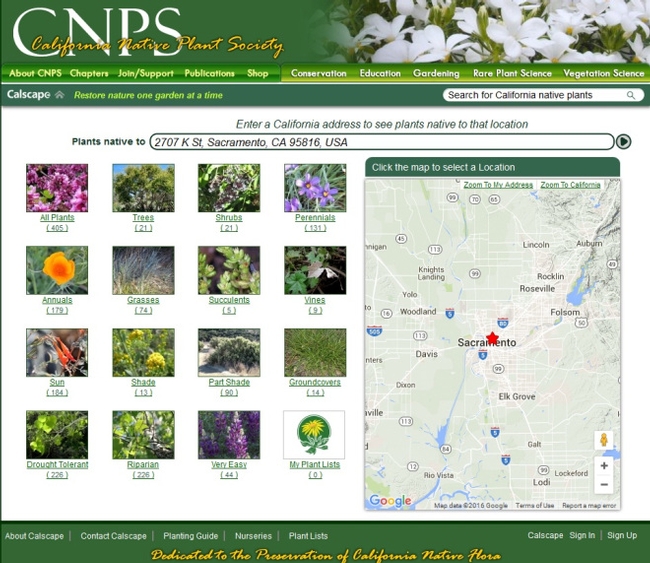By Penny Pawl, U. C. Master Gardener of Napa County
Winter is a perfect time to start planning the pollinator garden you will create in the spring. Start by deciding just where you would like to put the garden. Some people have taken out the center of their lawn and created a space for a garden for pollinators.
Pollinators are extremely important to the global ecosystem. Without them, many people would starve because food plants would not get pollinated. You can help by making an area in your garden hospitable to them.
Last fall, I picked out an area in my garden and decided to line it with hardware cloth because gophers had started to pull down my precious milkweeds. I dug up those milkweeds, then a helper laid wire over the soil and used building blocks to hold the wire in place. Over the winter, my helper added various soils and compost to create an area where the plants would grow. Soil was added to the openings in the building blocks.
Meanwhile, I was researching the plants that bees, birds and butterflies love. These plants have to be full of nectar as some pollinators need nectar for daily food and others need it to store in their nests.
I especially wanted to add nectars that would attract bumblebees. I have always had bumblebees in summer, but for some unknown reason, they disappeared the previous July. This year, I found the queen feeding on purple salvia in October. The queen is much bigger than the workers and usually stays in the nest while the workers gather nectar.
My next step was to start buying seeds of the plants I wanted. As soon as the weather warmed a bit, I started the seedlings in my hothouse. I had learned that marigolds, zinnias and salvias were pollinator favorites. For me, there is nothing more enjoyable than settling down on a long winter night with a stack of seed catalogs. Our bees, butterflies and birds evolved with California native plants, so that's what I chose.
Once you determine where you want your pollinator garden you can start to prepare the area for planting. Add a mixture of compost and soil. Let these two elements mix over winter, giving ground worms and small insects a chance to start working. Ground worms sift the soil through their gut and make tunnels for water to move through.
I found that bumblebees especially love ‘Hot Lips' salvia from Mexico. They drill a hole in the back of the flower to get directly to the nectar. Honeybees also visit my garden because there are hives nearby and some of them nap for the night in the flowers.
Native bees are small and often nest in the ground or in holes in trees and other wood. They visit my garden often for nectar.
Monarch butterflies need native milkweed to raise new generations so I grow two or three different native milkweeds in my pollinator bed. Some milkweeds come back from the roots, so you plant once and they continue to produce.
Sunflowers are always a good choice. I experimented with a Mexican sunflower with small flowers using seeds I bought online. Birds and squirrels are especially fond of sunflowers so plant a variety. I added more flowering plants to the mix, and as the flowers formed seeds, I plucked them and saved the seed.
Before I planted anything, I had a one gallon-per-hour drip line laid in the bed. Once plants got established, I watered once a week. Native plants don't require a lot of water, so that schedule was sufficient. For fertilizer, I used sifted worm compost which has all the trace elements plants need.
Above all, make your pollinator garden your own creation, with plants that you love and that they will, too. The pollinators will be grateful.
Next workshop: “Citrus: Preserve It, Serve It” on Thursday, January 16, from 1 p.m. to 4 p.m., at the University of California Cooperative Extension, 1710 Soscol Avenue, Napa. Presented by UC Master Food Preservers. For more details and online registration call 707-253-4221 or visit http://napamg.ucanr.edu.
The UC Master Gardeners of Napa County are volunteers who provide UC research-based information on home gardening and answer your questions. To find out more about upcoming programs or to ask a garden question, visit the Master Gardener website (http://napamg.ucanr.edu) or call (707) 253-4221 between 9 a.m. and noon on Mondays, Wednesdays or Fridays.
